An Evaluation of Human Error Probabilities for Critical Failures in Auxiliary Systems of Marine Diesel Engines
Hakan Demirel
Abstract Human error,an important factor,may lead to serious results in various operational fields.The human factor plays a critical role in the risks and hazards of the maritime industry.A ship can achieve safe navigation when all operations in the engine room are conducted vigilantly.This paper presents a systematic evaluation of 20 failures in auxiliary systems of marine diesel engines that may be caused by human error.The Cognitive Reliability Error Analysis Method(CREAM)is used to determine the potentiality of human errors in the failures implied thanks to the answers of experts.Using this method,the probabilities of human error on failures were evaluated and the critical ones were emphasized.The measures to be taken for these results will make significant contributions not only to the seafarers but also to the ship owners.
Keywords Marinedieselengine.Humanerrorprediction.CognitiveReliabilityErrorAnalysisMethod.Criticalfailures.Marine engineering
1 Introduction
The maritime industry is under constant risk of human factorrelated errors,such as occurrences stemming from lack of supervision or fatigue.
In this context,Akyuz(2016)reported that the mitigation of human errors to prevent accidents can help identify and scrutinize human error probabilities.However,no emphasis is laid on the identification of human error probabilities in the maintenance procedures of marine diesel engines.Marine engine room management requires effective elimination of human errors to reduce accidents.Harmony and cooperation among seafarers must exist for a system to operate successfully.Equipment and system resources should be designated in accordance with program and standard operation procedures,periodic checks,and updated information.
Under challenging and changing circumstances,maintenance operations in diesel engines demand commitment and high level of human-machine interaction.The weather conditions,ambient temperature,ship motions,noise,and vibration,workload,and stress are direct factors that influence the operational status of seafarers.For example,extreme weather conditions may adversely affect the performance of seafarers in the engine room,increase the incidence frequency,and lead to causalities.Consequently,the system fails to operate.To better manage a ship’s diesel engine room,modeling an efficient human error probability is essential.
Critical tasks and missions,many of which involve teamwork in accordance with procedures,are assigned to engine room staff.Just one single engine failure may bring about another failure if timely detection is not achieved or necessary precautions are not taken.Moreover,the consequences of these failures may be more serious than expected and unrecoverable loss is likely.Action should be taken to mitigate the failures before problems evolve into unsolvable nuisances.Effective supervision by the seafarers can detect any major engine failure in time.Additionally,failure frequencies and relevant auxiliary systems are primary indicators to determine possible causes.
Seafarers must periodically monitor the auxiliary systems and conduct measurements at regular intervals.Pressure and exhaust temperature,combustion air,oil and cooling water,and turbocharger with a marine diesel engine should be controlled to avoid possible failures.All these operations can be performed thanks to human factors.For a marine diesel engine in operation,all operations must be carried out at the appropriate time and place.
2 Literature Review
Accident investigation reports released by the International Maritime Organization state that machinery failure causes almost one-fourth of all maritime accidents(Dobie et al.2015).Their data briefly explain the importance of machinery maintenance in maritime systems,thereby minimizing the severity of failure,avoids unexpected stops,extends the life of the machinery,and helps reduce the number of accidents.Seafarers located on the boat perform ship machinery maintenance and may lead to unintentional mistakes.Former accident investigations revealed that the primary reason for approximately 80% of shipping accidents is human error(Akyuz 2017,2016;Fotland 2004).
Rouse and Rouse(1983)analyzed the possible causes and factors of human error and evaluated the theories of classification schemes.Shiihara et al.(1999)examined 96 cases of failures and related problems occurring to machinery in the engine room and compared results of the analysis with periodical and occasional classification surveys.Er(2005)reviewed the root causes of marine accidents over the past 15 years and categorized the human factors;these categories revealed 15% rating error,30% deck officer error,2%engine officer error,8%pilot error,and 7%shore-based personnel error.Hetherington et al.(2006)discussed the monitoring and modification of human factor issues that contribute to maritime safety performance.Celik and Er(2007,June)studied the potential influences of poor design and constructional failures on human errors during operation.Cebi et al.(2009)suggested an expert system to aid shipboard personnel in solving ship auxiliary machinery troubleshooting in maneuvering positions and voyages in critical waters.Schröder-Hinrichs et al.(2011)reviewed 41 accident investigation reports relevant to machinery space fires and explosions and analyzed the effect of organizational factors.Mallam and Lundh(2013)assessed the international mandatory regulations and non-mandatory guidelines regarding the human elements that affect engine control room design.Islam et al.(2016)investigated the maintenance procedures of marine engines to minimize human error and established the human error probabilities for 43 considered activities.Karahalios(2017)studied the hazards associated with the development of a fire on board a ship and analyzed the 77 casualties by using the AHP method.Jeong et al.(2017)systematically examined the safety of fuel preparation room and the impact of an explosion risk for an LNG-fueled ship.Xi et al.(2017)utilized the modified Cognitive Reliability Error Analysis Method(CREAM)based on evidential reasoning and decision-making trial and evaluation laboratory(DEMATEL)for human error probability quantification in CREAM rational.They compared their findings from sensitivity and quantitative analyses with the real data collected from Shanghai coastal waters.Islam et al.(2017)advanced the methodology for safe and reliable marine and offshore operations and applied this methodology to improve the maintenance practices of a marine engine exhaust turbocharger and a condensate pump on offshore oil and gas facilities.Akyuz et al.(2018)suggested a practical application for safety management and crew reliability performance during operating procedures of an emergency fire pump on board a ship.In addition,many studies related to human error assessment have been conducted by Ung(2019),Zhang et al.(2019),Kandemir and Celik(2019),Puisa et al.(2019),and Kandemir et al.(2019).
This paper contains styles discussed,each of which is carefully prepared for corresponding purposes as shown in this document.
3 Methodology
Systematic quantification of human error probability is acquired by applying the CREAM method.The methodology is introduced in the next section.
3.1 CREAM
One of the robust methodologies,CREAM,allows a prediction of the probability of human error and analysis of cognitive human reliability.The method mainly estimates potential human error and analyzes and quantifies error in a retrospective way(Hollnagel 1998).Thus,retrospective and prospective analyses are possible.The method is intended to identify parts of the work,tasks,or actions necessary,or depend on human cognition,so variations in cognitive reliability may affect it(Hollnagel 1998).CREAM is divided into two versions:basic and extended.Both enable comprehensive human error assessment.While human interactions within the scope of initial screening are presented by the basic version,an extensive analysis for human interaction is conducted by the other version by adopting the output of the basic version(Akyuz and Celik 2015).
Four different control modes are integrated into CREAM to determine the probability of human error in numerous actions.At this juncture,a derivation of the contextual control model(COCOM)is performed,laying a practical and conceptual
basis to increase human performance(Akyuz 2015;Hollnagel 1993).Besides the practicality of both,they are scrambled,opportunistic,tactical,and strategic.Given that the strategic control mode introduces the lowest probability of human error,the highest human error probability is referred to by the scrambled control mode.Control modes and relevant failure probabilities are shown in Table 1,which illustrates the main steps of CREAM for the quantification of the probability of human error.
3.2 Introducing Control Models
COCOM with four control modes(i.e.,scrambled,opportunistic,tactical,and strategic)lays the basis of the theoretical background of CREAM.Experiences of personnel and knowledge of dependency affect the control modes.A brief introduction of the modes and their effects follows(Akyuz and Celik 2015):
·Scrambled control mode:Given the randomness or unpredictability of the next action,the scrambled mode indicates that the operator has minimum control over the system.
·Opportunistic control mode:Careless characteristics of the situation with variants such as lack of time and inexperienced operator determine the next action.
·Tactical control mode:Planned procedures are more or less followed by the performance of operator,despite the possibility of some deviation.
·Strategic control mode:Time is available,and action can be assumed to be at a higher level by the operator.The operator conducts more efficient action than the others thanks to this mode.
With the aim of monitoring the initial screening of human failure events,Figure 1 is employed.The figure illustrates the basic operator control modes.
3.3 Asses Common Performance Condition
In the method,the definition and assessment of common performance condition(CPC)help determine human cognition and action context.The conditions of the operator stated bythe CPCs similar to performance shaping factors exert a heavy influence on human error.CPC levels and associated performance effect are depicted in Table 2(Hollnagel 1998).
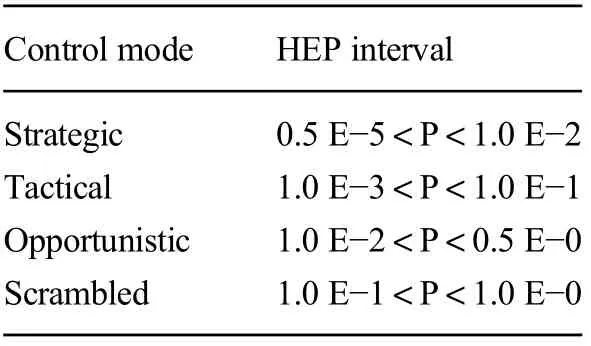
Table 1 Control modes and HEP intervals
The CPC score is an essential element to estimate the probability of human error.When calculating the CPC score,the number of times conducive to the reduction of performance reliability or increase in performance reliability is considered.Following the accumulation of CPC scores,the control modes need a definition to find the human error probability interval.The combined CPC scores,∑reducedand∑improved,represent the appropriate control mode providing the probability of human failure intervals.Thus,CPC∑notsignificantdoes not influence the HEP in any way(Akyuz 2015).
3.4 Identifying Context Influence Index
CII in CREAM provides quantification of human error,by which quantification of CPCs is possible.Deduction of the number of reduced CPCs from improved CPCs ascertains this value.Equation(1)demonstrates the quantification process of CII.In the equation,X stands for the number of reduced CPCs,and Y is the number of improved CPCs(Akyuz 2015;He et al.2008).

He et al.(2008)proposed a specific control mode capable of converting CII into a crisp value in line with the CPC score.Specific control modes and CII values with the categorization of the control modes are represented in Table 3.In the control modes,as∑notsignificant-merged CPC scores have no significant effect over the HEP value,we consider the CII value as 0.
3.5 Predicting Performance Influence Index

Figure 1 Operator control modes

Table 2 CPC level and performance effect
The performance influence index(PII)values were introduced to specify actual weighting factors for cognitive functions such as planning,execution,observation,and interpretation(Akyuz 2015).Given that each CPC has a different PII value,they are qualified as various weighting factors.This calculation is intended to monitor the screening stage.Within this context,Eq.(2)describes the CII value and PII.In the equation,the PII value as the basis of the weighting factor was introduced in the CREAM-extended version and arranged by expert judgment(Akyuz 2015;He et al.2008).

3.6 Calculating Cognitive Failure Probability
This step is related to determine cognitive human failure probability owing to cognitive failure probability(CFP)defining human failure probability for each cognitive failure type.The nominal cognitive failure probability(CFP0)is attributed to each operational task.CFP0acquires a dozen of sources and presents nominal values,which are provided for failures of cognitive function(Akyuz 2015;Hollnagel 1998).In CREAM,13 generic failure types are established under four cognitive functions.Nominal CFP is displayed in Table 4.
Equation(3)illustrates the correlation between the CII and CFP.The logarithmic equation is employed to depict changes in human error interactions with the variance in external conditions(Akyuz 2015;He et al.2008;Apostolakis et al.1988).

In the equation,k states a constant coefficient and is found by Eqs.(5),(6),and(7).
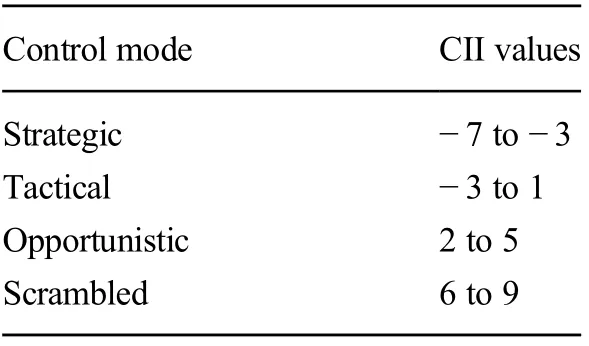
Table 3 Specific control modes and CII values
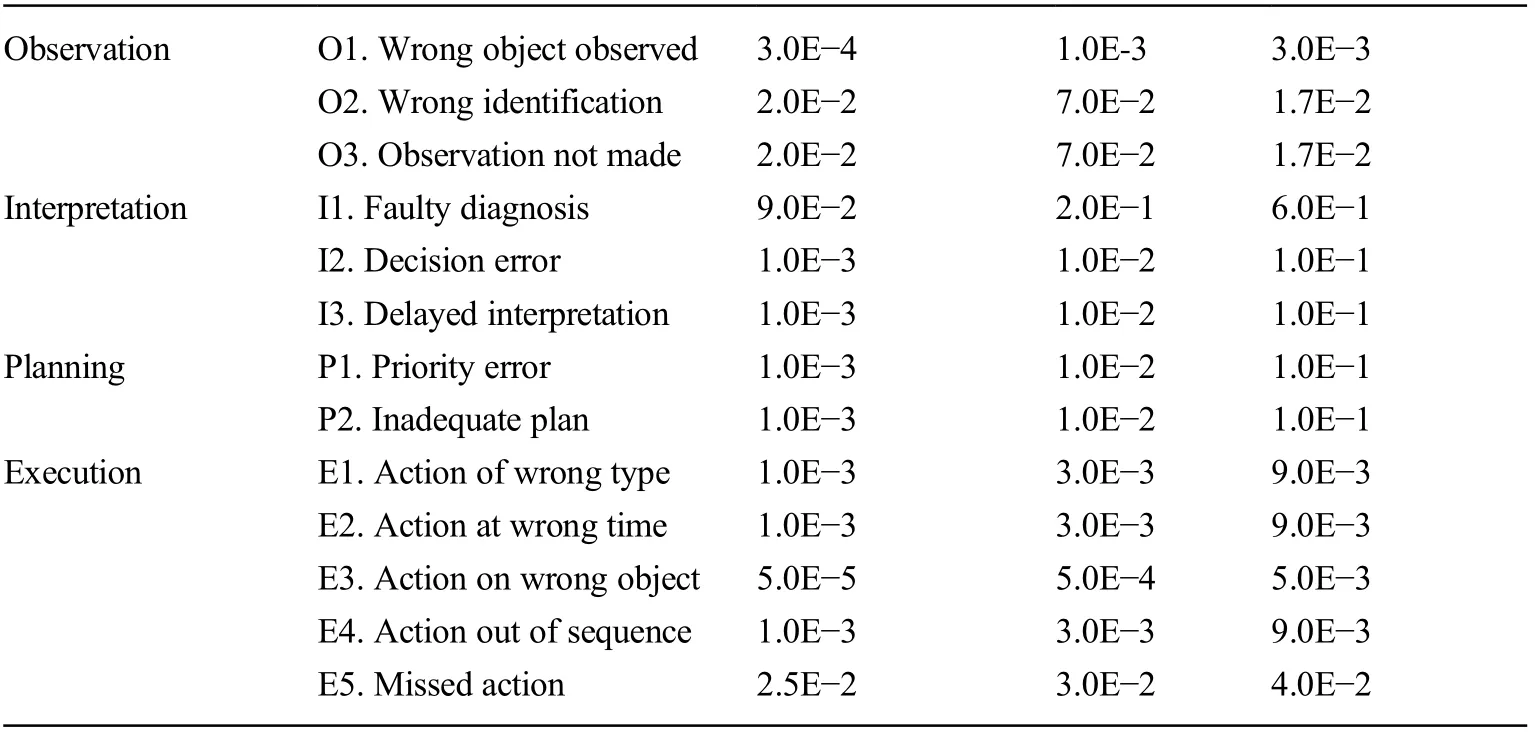
Table 4 Nominal CFP Cognitive function Generic failure type Lower bond(0.5) Basic value Upper bond(0.95)
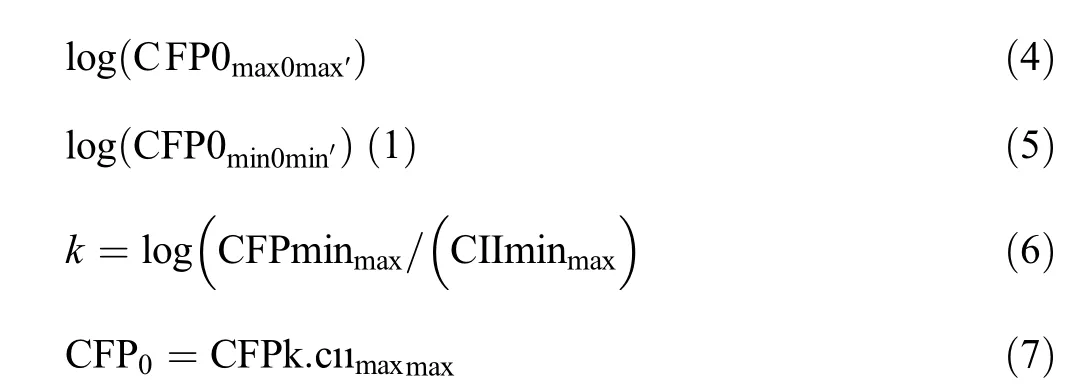
Akyuz(2015)determines that k is 0.26 if CFPmaxis 1.0000 and CFPminis 0.00005.Equation(8)is utilized to calculate the adjusted CFP stating HEP.

4 Application
This section highlights potential human error probabilities,which are calculated and analyzed for critical failures in auxiliary systems of marine diesel engines.Diesel engine operation is carried out so that the probability of human error is quantified.
4.1 Operation of Marine Diesel Engine
The shipping industry features diesel engines,which are called compression ignition engines because of technical reasons.Many classification types based on different parameters(speed,usage,operation,and cylinder arrangement)for diesel engines are made(Mollenhauer and Tschöke 2010).Diesel marine engines are mounted on boats,merchant ships,tankers,freighters,and submarines.The marine industry uses 2-stroke and 4-stroke engines for operation.The slow-speed 2-stroke engines are chosen for the main propulsion or turning of the propeller/s of the ships.By contrast,the engines used to provide auxiliary power are generally 4-stroke high-speed diesel engines.In marine diesel engines,fuel,oil,exhaust,cooling,air supply,governor,and other systems function properly atthe required power and rotation range deemed by engine manufacturers.When these systems are in operation,everyone should be wary of many issues.While sustaining the operation of a marine diesel engine,the heat-operating value is critical.In particular,cooling water and oil values ensure the protection of the engine.The cooling water and oil temperature should be fixed at the optimum levels to guarantee safe operation of the marine diesel engine.The heat value of the exhaust gases is regarded as an important factor that provides information about the combustion processes.
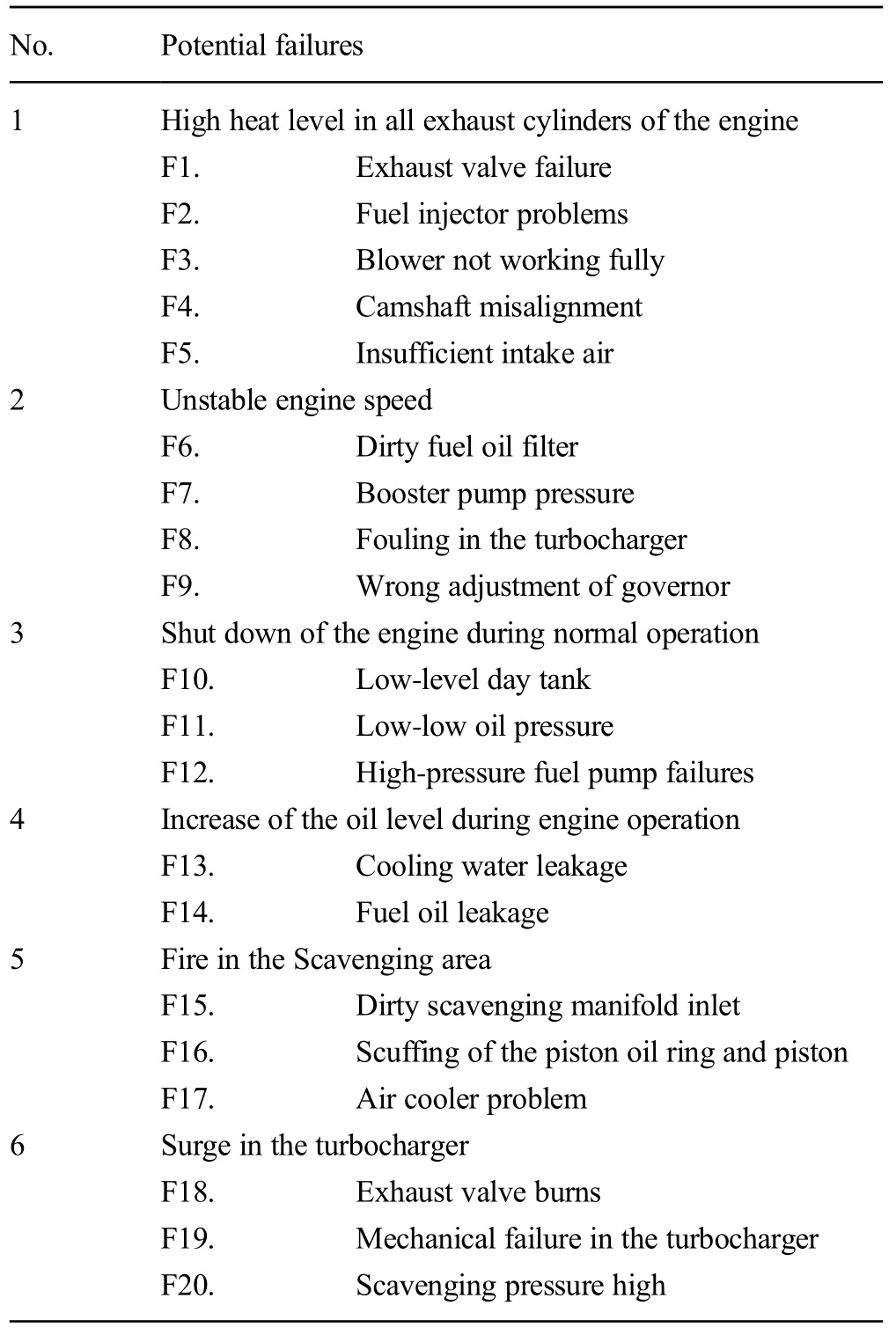
Table 5 Operational diesel engine failures caused by possible human error

Table 6 CPC evaluation by the consensus of experts
Including the values mentioned above,a diesel engine operates also by checking these values and stops when necessary.Therefore,seafarers must check all these data and carry out the necessary procedures on time.Safe navigation and engine operation are directly associated with them.
4.2 Problem Description
In the engine room,all auxiliary systems are integrated during operation,so the entire system is vulnerable to any failure in any system.The basic failures that may arise from the content of the problem are detected within the scope of the literature(Balin et al.2015).Many reasons can be listed for the occurrence and recurrence of these failures.Conducive factors are given in Table 5(Balin et al.2015).
Human factor has a significant influence while assessing the abovementioned possible failures and causes.Prior to these failures becoming unresolvable in the engine room,the operating temperature and pressure values established by the manufacturer of all equipment require checking at certain intervals and necessary measurements have to be taken.Periodic filter cleaning,regular injector maintenance,and regular evaluation of properties of the fuel,injected fuel quantity,injection time,oil levels,and cooling water tank levels for the related equipment must be conducted.When the abovementioned inspections are not made in time,all of these failures can take place.Thus,the levels of significance of all differ.The effects of human negligence on these failures are settled in accordance with the opinions of experts in the field.Considering these evaluations,we can decide more effective human errors on the concerned failure.
4.3 Evaluation of Respondents
Expert views in the field of inadequate information access in the marine industry should be utilized.In this study,the opinions of three experts have been considered.The first one is a professor in the department of marine engineering and academic member for over 10 years.The second is the third engineer on ships and a director of a maritime company with 6 years of work experience.The last one is a naval architect and marine engineer with 6 years of experience as a maintenance engineer in shipyards.These three experts haveevaluated the importance of human effect on the causes and failures of marine diesel engines.The answers of the experts have been evaluated by the CREAM method,and realistic results were obtained.
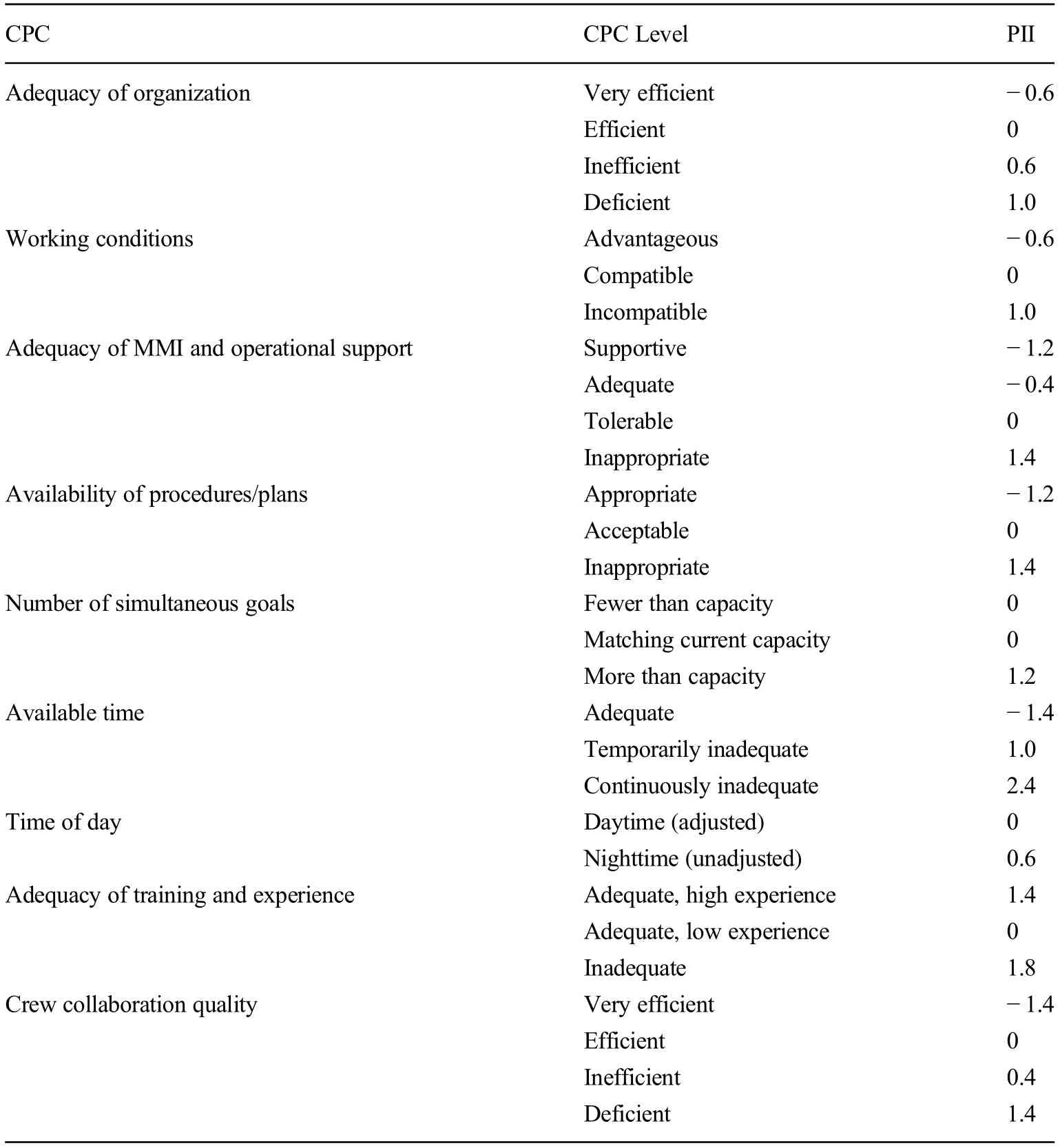
Table 7 PII for CPCs
4.4 Extensive Human Error Prediction for Operation Procedure of Marine Diesel Engine
The human error originated marine diesel engine failures(F)during operation are given in Table 5.The potential operational failures due to human errors are assessed through brainstorming of three experts.Prior to the assignment of CPC,the work environment of ship engine room,time of day,engine crew collaboration,noise level,engine crew ability,and fatigue level are considered by the marine experts.A description of CPC evaluation by the consensus of marine experts is in Table 6.
Table 2 accordingly depicts the CPC effects through engine crew performance reliability.Within this scope,Eq.(1)is employed for quantification.The CII value,at this point,can be set as CII=-1 for no.1(high heat level in all exhaust cylinders of the engine),CII=-2 for no.2,CII=0 for no.3,CII=2 for no.4,CII=2 for no.5,and CII=-2 for no.6 in diesel engine operational failures stemmed from human error.Through the findings,the PII values of the CPCs are displayed in Table 7.The quantification process of the CII value in the extended version of CREAM is given by the application of Eq.(2)and Table 8.
Following the calculation of CII values for each main failure type,the CFP values are determined to analyze diesel engine operational failures in relation to human factor.Equation(7)enables the calculation of CFP.Adjusted CFP values along with cognitive activity,cognitive function,and generic failure type are illustrated in Table 8.
4.5 Findings and Discussion
The ship’s engine room comprises complicated systems,and availability of the designed maintenance and repair process for each equipment is known.In this case,deficiencies may occurin main and auxiliary engine operations as a consequence of intensive work,thoughtfulness,lack of experience,or technical insufficiency.All the seafarers working on board are incumbent.
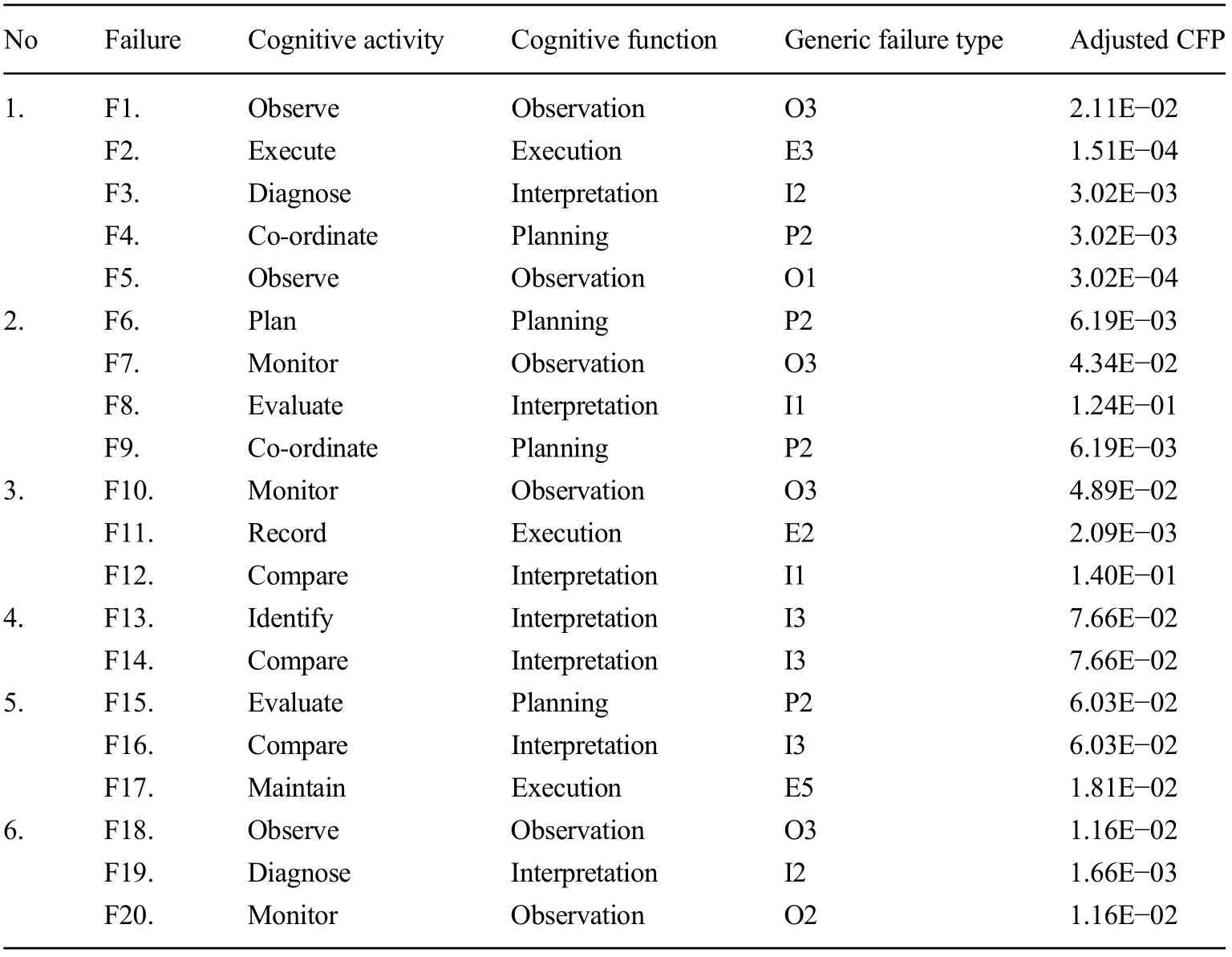
Table 8 Adjusted CFP values
The human error probabilities that occur during the operations of marine diesel engines are decided by the answers given by the experts mentioned above and finally concluded through the CREAM method in this study.Table 5 describes the failures originating from human error,and the hazards that arise as a result of these failures have been mentioned.The adjusted CFP values for 20 critical failures that are identified for these operations are given in Table 8.CFP values from 1.51E-04 to 1.40E-01 are in view of the answers of experts in the field.In compliance with the results acquired in Table 8,fouling in the turbocharger(F8;CFP value:1.24E-01)and high-pressure fuel pump failure(F12;CFP value:1.40E-01)have been established as the most critical failures based on human error.The turbocharger’s cleaning maintenance is a grave issue for the ship if failed to perform on time.Contamination in the turbocharger leads to changes in the turbocharger balance and turbocharger speed,causing sudden changes in the compressed air pressure and counter pressure in the exhaust section.In a ship’s engine room,pumps serve important functions.As a result of failures in high-pressure fuel pumps,inadequate fuel is found in the combustion chamber;thus,the engine stops or the engine speed changes.Considering the possible consequences of these two failures,the importance of the reasons discussed can be understood.
The human error probabilities expressed by the above CFP values arise out of the excessive workload of seafarers in the engine room during operation.Table 8 demonstrates that the two least effective failures caused by human error are fuel injector problems(F2;CFP value:1.51E-04)and insufficient intake air(F5;CFP value:3.02E-04).These failures are easy to discern and quick to deliver with a general knowledge base,because the human error risk for these failures is regarded as the lowest.
Considering the abovementioned information,this probability poses a high risk in case of failure,which will cause the main engine to stop or change its speed,if the results of human error probabilities are assessed in general.The results obtained by the applied method are in compliant with the facts.Consequently,safety awareness must be increased to minimize all these risky situations,and operational procedures must be applied on time.
5 Conclusion
A ship can perform safe navigation at sea as long as maintenance and repair work for main and auxiliary marine diesel engine equipment are fulfilled.Unless done by the seafarers in maintenance periods,a number of unexpected failures may occur and any of them may be the root cause of more than one problem.Many of the marine diesel engine operations have to be performed at high temperatures and pressures,and such conditions are risky situations for seafarers.Thus,human error has a direct effect on the relationship between main and auxiliary diesel engine systems of a ship.Complicated problems may arise from the lack of motivation or distraction of seafarers working on these systems.This paper discusses 20 critical failures in terms of related hazards.The answers given by the experts in the field,thanks to which,the probability of these 20 failures is calculated by the CREAM method,shape the effects of human error on these identified failures.
In addition,the human error effect on these 20 critical failures is expressed by CFP values,and a new perspective has been established.The method used is a valid and robust method.Technically,it provides advantages in many stages.The evaluations can be renewed in further studies by changing the number of failures and the number of experts.In this study,a basic structure was created.
Consequently,the outcomes acquired in this study will make a significant contribution to seafarers and ship owners in an indirect way.Additionally,a comprehensive study addressing the safety process of marine diesel engine operations in the direction of these results are given.
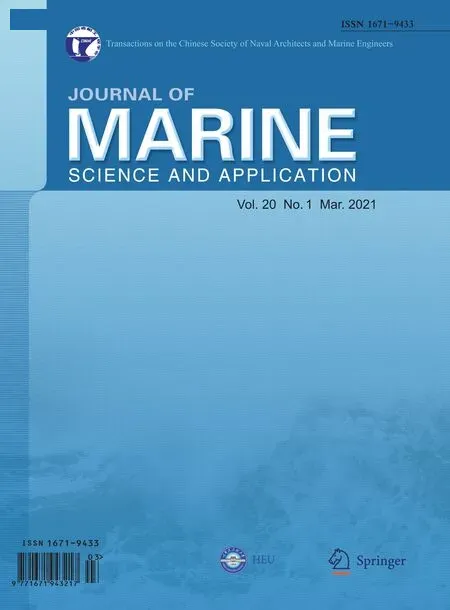 Journal of Marine Science and Application2021年1期
Journal of Marine Science and Application2021年1期
- Journal of Marine Science and Application的其它文章
- Anticorrosive Properties of Green Silver Nanoparticles to Prevent Microbiologically Influenced Corrosion on Copper in the Marine Environment
- Design and Testing of an Underwater Microscope with Variable Objective Lens for the Study of Benthic Communities
- Mooring Damage Identification of Floating Wind Turbine Using a Non-Probabilistic Approach Under Different Environmental Conditions
- Experimental Investigation of a Hydraulic Turbine for Hydrokinetic Power Generation in Irrigation/Rainfall Channels
- Measurements of Emissions to Air from a Marine Engine Fueled by Methanol
- Temporal Evolution of Scour at Submerged Circular Cylinders
